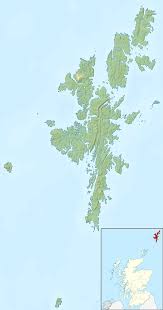Exploring the Shetland Islands: Nature and Heritage Unite

Introduction
The Shetland Islands, an archipelago located northeast of mainland Scotland, are often overlooked by travellers seeking the allure of the Highlands and Lowlands. However, this collection of over 100 islands offers a treasure trove of natural beauty, rich history, and diverse wildlife, making it a melting pot of culture and exploration. Whether you are a hiker, a birdwatcher, or someone interested in Scotland’s Norse heritage, the Shetland Islands are a destination that deserves recognition and appreciation.
The Unique Landscape and Wildlife
The Shetland Islands are characterised by rugged coastlines, dramatic cliffs, and rolling hills, providing a stunning backdrop for outdoor enthusiasts. The islands are home to a variety of wildlife, including puffins, seals, and a plethora of seabirds, attracting nature lovers year-round. Recent reports from the Shetland Wildlife, a local conservation group, indicate that the number of birdwatching tourists has surged by 30% in the last year, underscoring the islands’ potential as a prime eco-tourism destination.
A Rich Cultural Heritage
The cultural heritage of the Shetland Islands is a vibrant tapestry woven from Norse influences and a distinct Scottish identity. The annual Shetland Folk Festival, which takes place every May, celebrates this unique blend of traditions, drawing performers and visitors from around the globe. Additionally, the islands are steeped in history, evidenced by archaeological sites dating back thousands of years, including the ancient village of Jarlshof, which showcases life from the Bronze Age through to the Middle Ages.
Recent Developments and Future Prospects
In recent months, the Shetland Islands have gained attention for their potential in renewable energy, particularly wind and tidal energy developments. The local council has set ambitious targets to become a leader in sustainable energy production, aiming to generate a substantial percentage of Scotland’s renewable energy by 2030. This is not only pivotal for the islands’ economy but also enhances their reputation as an environmentally friendly destination.
Conclusion
As awareness of the Shetland Islands continues to grow, both for their breathtaking landscapes and their cultural significance, it becomes increasingly essential for potential visitors to consider this hidden gem in their travel itineraries. The fusion of natural beauty, rich history, and forward-thinking sustainability initiatives positions the Shetland Islands as a remarkable destination for a diverse range of travellers. Whether for a short visit or a longer exploration, the Shetland Islands await with open arms, promising unforgettable experiences and discoveries.









